Main menu
Common skin conditions

NEWS
Join DermNet PRO
Read more
Quick links
Author: A/Prof Amanda Oakley, Dermatologist, Hamilton New Zealand, 2013.
An abscess is a cavity filled with pus (pyoderma or sepsis). It contains white blood cells, dead tissue and bacteria.
Cutaneous abscesses may occur anywhere on the skin, but are most common under the arms, at the base of the spine (pilonidal disease) or around the genitals (for example, Bartholin abscess) and anus.
An abscess usually presents as a hot, red, swollen and painful lump. It may lead to fever, swollen lymph nodes, and illness including potentially dangerous septicaemia. Non-bacterial abscesses may be cool, skin coloured and painless.
If not treated, an abscess eventually bursts and drains thick yellow pus.
Although it may become 'walled off' by an inflammatory reaction, an abscess is not surrounded by a true capsule.
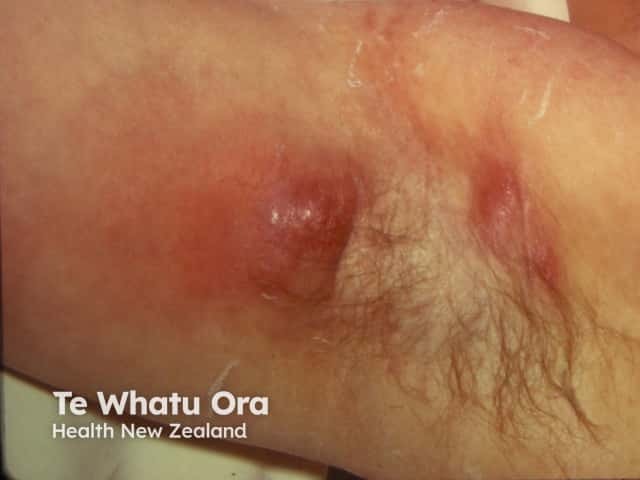
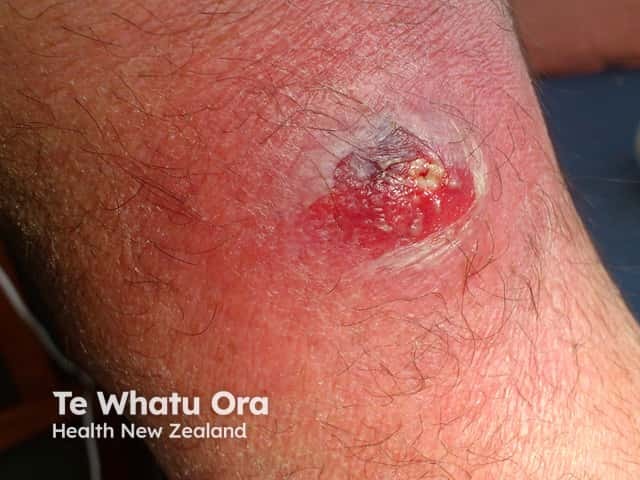
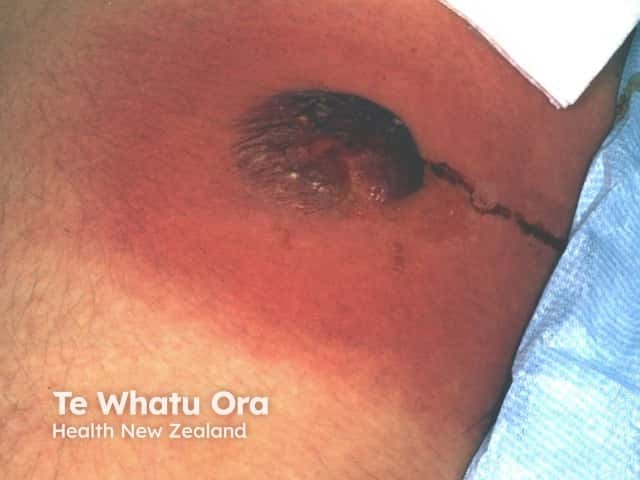
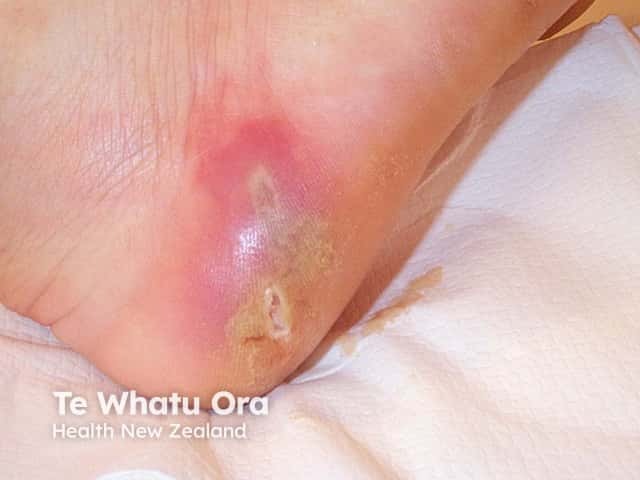
Wound infection
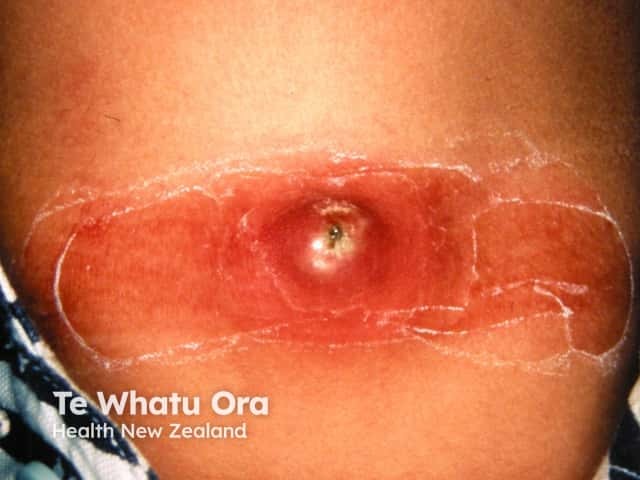
Sterile abscess following collagen test injection
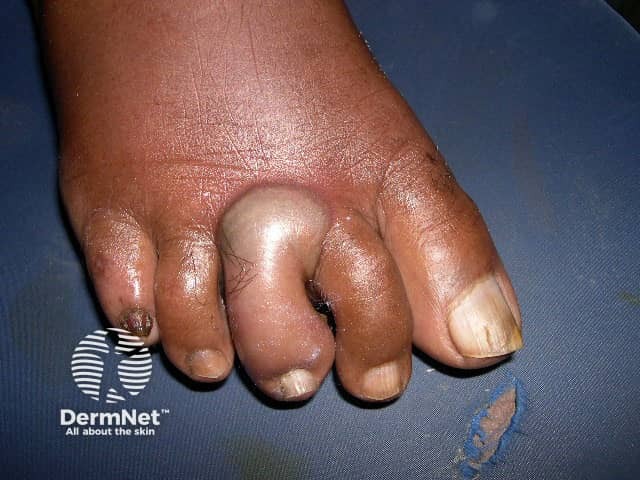
Abscess in diabetic
A painful abscess is usually due to acute bacterial infection. Bacteria penetrate a break in the skin such as a puncture wound, or via a hair follicle. An abscess may also develop around a foreign body, such as a splinter. The most common causes of infective abscesses are:
Infective abscesses may affect healthy people, but they are more common in the following circumstances.
A sterile abscess may persist after an infection has been cleared, as it contains dead or necrotic tissue and inflammatory cells.
A sterile abscess may occur after corticosteroid injection. This is more likely when the medication has spilt into subcutaneous fat. A foreign-body or other hypersensitivity reaction to injected material such as bovine collagen may also result in abscess formation.
Certain inflammatory skin diseases may cause tissue destruction and abscess formation, in the absence of pathogens (infectious microbes). These include:
If the cause of an abscess is unknown, the following tests may be undertaken.
If a patient has had recurrent abscesses, consider nutritional deficiency, especially of iron; immune deficiency; immune suppression by medications such as systemic steroids; diabetes; or poor circulation.
An abscess should be explored to remove foreign bodies, and its contents should be removed. This requires making a surgical incision and draining the pus. The cavity is then thoroughly washed out with saline. It should be left open to allow further pus to drain away. Wicks are sometimes inserted if the abscess is deep, to help it drain.
Antibiotics are often prescribed, chosen according to the organism causing the abscess and its sensitivities.
If abscesses are due to staphylococcal infection, the risk of recurrence can be minimised by: